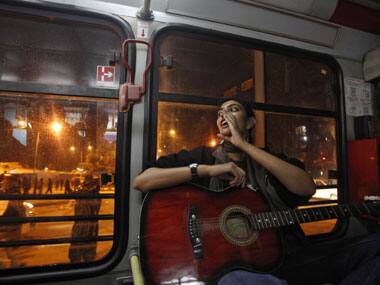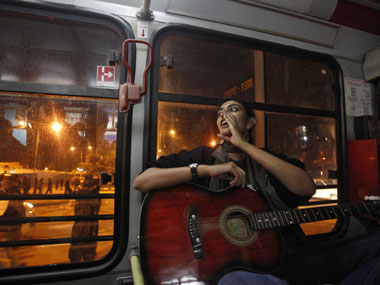It’s been a year since a young woman was raped in the country’s capital and left with such grievous wounds, that she died from them following a weeks-long battle. In its aftermath, horrifying stories of other cases of sexual assault surfaced in the mainstream media. Some of these incidents of sexual violence also pinned down some important public figures in India. However, despite widespread outrage, women in India continue to be viewed as objects of sexual gratification. The hall mark of a decent society is how well it treats its women. In this regard, much of the developing world does not score too well. This holds true for the subcontinent as well. Women continue to wallow in a condition that cannot be described as sanguine. Be it the ‘honor killings’ in Pakistan or several parts of India, the dowry related deaths , or the glass ceiling in labour markets, or ‘ eve -teasing’ , women are, by and large , at the receiving end of society. [caption id=“attachment_1289019” align=“alignleft” width=“380”]  A girl protests against the Delhi rape on a bus. Reuters.[/caption] In the wake of the Delhi rape incident, tighter and stricter laws have been devised for preventing or pre-empting sexual crimes against women. This, however, is a part or partial solution especially in the Indian context. While there is a robust body and corpus and statutes of law on papers, it is in the sphere of implementation that justice flounders. Moreover, Indian women, by and large, are still a reticent lot and are loath to come out publicly against the perpetrators of sexual crimes. Overlaying this are the taboos associated with having being a victim of sexual violence. All these factors add up and preclude recourse to law as the sole solution for preventing and pre-empting sexual crimes. What then can be done to attempt to reduce sexual crimes to a bare minimum? (Eliminating sexual crimes is a vain hope. A psychopathic element exists in all societies and psychopathic individuals are extremely hard to detect and weed out). The answer lies in education. The nature of this education should not merely be learning but also empowering and the thrust of this education must be to disabuse both men and women of stereotypes, prejudices and biases. Men should be made to understand that women are equal. Similarly, women should understand that they are equal members of society and hence claim their rights. This education should be buttressed and complemented by attitudinal changes in society, polity and the workplace. If need be, given that ours are still largely traditional societies, religious scriptures should be employed to render clear the status of women and short shrift be given to notions of male superiority and female subordination. The task is very challenging given the entrenched stereotypes, prejudices and biases that dominate the male psyche in the subcontinent. However, dedicate ourselves to this task we must. Law then, to repeat, is only a part solution- albeit an important one especially in terms of a deterrent effect. However, the real solution lies in education of a kind and nature that not only is empowering but enlightening. It is about time that as a society, we introspect and embark on an exercise that redeems us all. A decent society that sees women as equal and productive members of society can be the best tribute to the memory of the December 16 victim in Delhi. We owe this to her.
A decent society that sees women as equal and productive members of society can be the best tribute to the memory of the December 16 victim in Delhi.
Advertisement
End of Article


)
)
)
)
)
)
)
)
)



